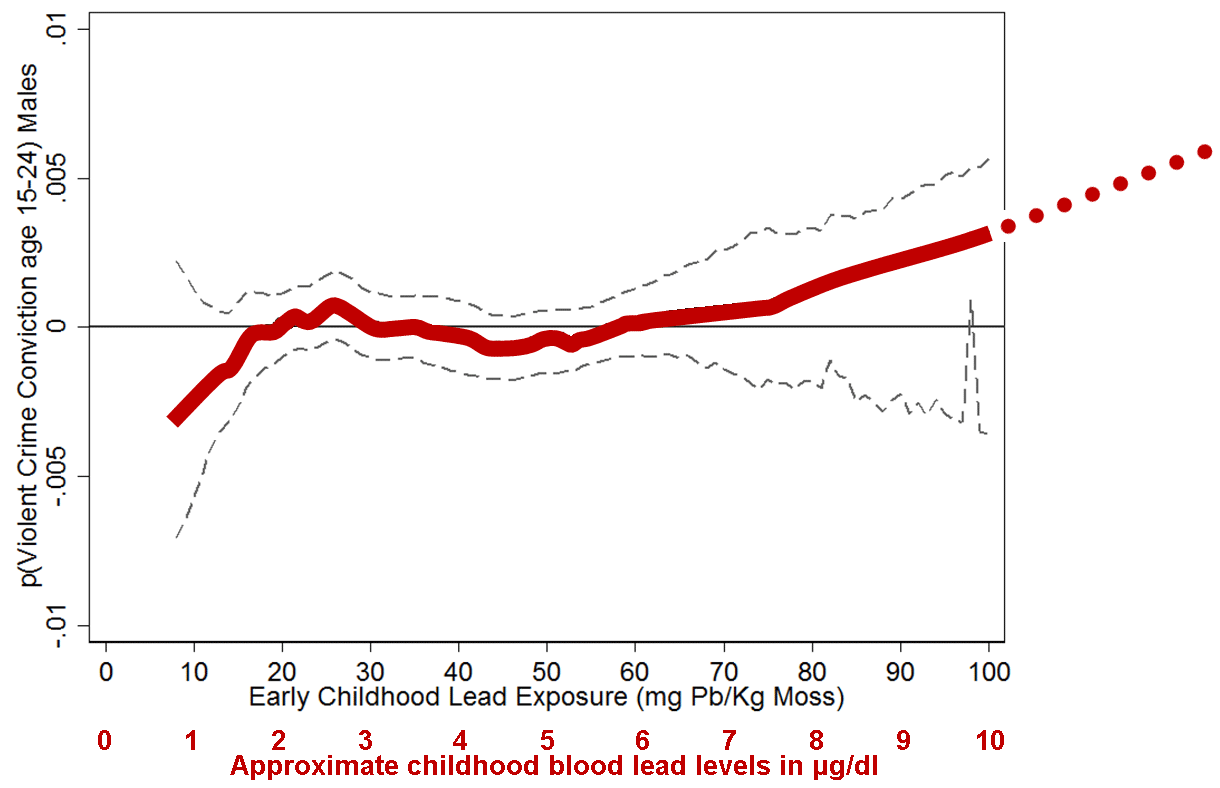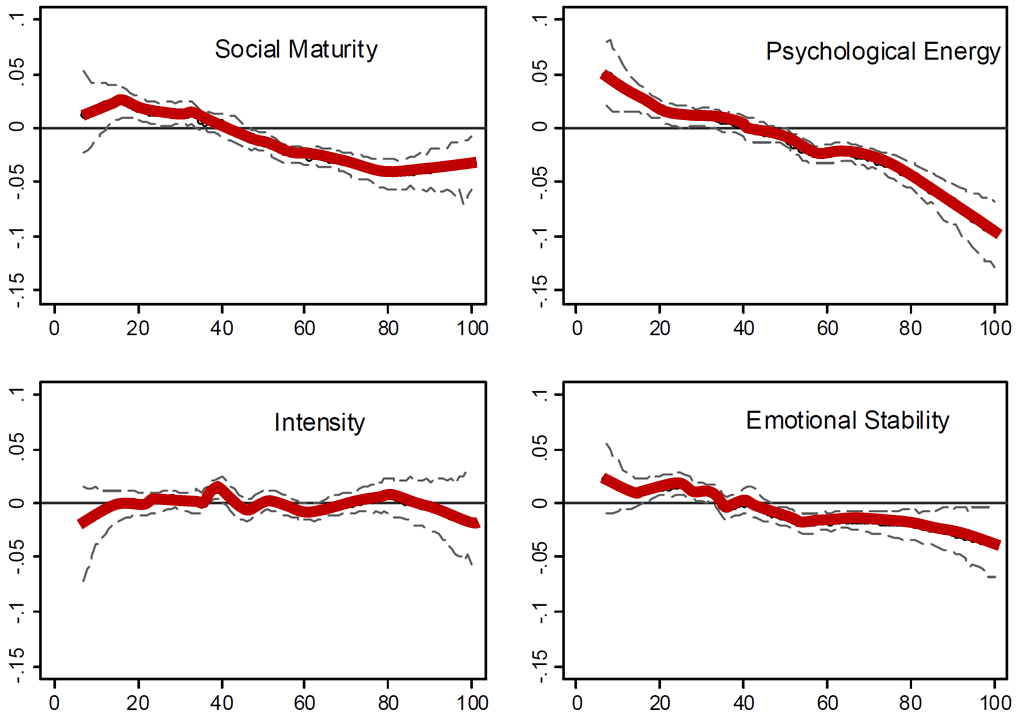I try to keep everyone up to date on the latest research into lead poisoning and crime, but I missed a paper earlier this year from three researchers in Sweden. At first glance, it’s just a routine test of the lead-crime hypothesis for yet another country. The researchers follow the usual path of (a) measuring atmospheric lead levels in various regions at various times, (b) showing that these levels correspond to blood lead levels, and (c) performing correlations with all the usual controls between lead poisoning in infants and later outcomes in life. Not to keep you in suspense, the researchers find exactly what you’d expect: childhood exposure to lead predicts lower IQs and higher crime rates later in life.
But there are several interesting aspects to this paper—and that’s not even counting the fact that Sweden’s EPA measures heavy metal concentrations in the atmosphere via a nationwide grid of moss samples. Moss! Those Swedes are pretty clever. The Swedes also keep good records of their citizens on a variety of measures, which allows the researchers to test outcomes all the way into adulthood with a pretty large sample size (800,000 subjects).
Anyway: Just as in the US, Sweden phased out leaded gasoline in the 70s and 80s, which caused lead poisoning in infants to decrease. Unlike the US, however, lead levels were already fairly low, so the Swedish team was able to measure the effect of changes not just from 30 ug/dl to 20 to 10, but from 10 to 5 to 2. What they found was that the impact of lead reduction does eventually flatten out, but it happens at very low levels. There are gains to be made by reducing blood lead levels all the way down to 2-3 ug/dl.
At the risk of some slight irresponsibility, however, I want to reproduce their chart for violent crime. Here it is:

This might mean nothing, since the error band is quite large. But if it’s right, there’s no threshold for lead poisoning and violent crime. Just the opposite, in fact. As childhood lead levels decrease, the likelihood of violent crime later in life decreases all the way down to about 6 ug/dl. Then, after flattening out, it takes a sharp downward dive starting around 2 ug/dl. In other words, getting that last little bit of lead out of the environment might pay off considerably in less violent crime 20 years from now.
Because of the large error bars, this is the kind of thing that needs confirmation. But it would be worth the effort. We already know that reducing lead levels from 30 to 20 to 10 to 5 pays off, but we don’t know very much about levels below that. It could be that anything under 5 ug/dl is OK. Alternatively, the difference between 5 ug/dl and 1 ug/dl might be considerable. Or, given the error band, the effect could be linear all the way down. We should find out.
One other interesting aspect of this paper is that it tests the effect of lead on non-cognitive traits, which is useful since the effect of lead on cognitive traits like IQ is already about as settled as the law of gravity at this point. Here are their charts:

Lead poisoning affects three out of four of the measured traits all the way down to extremely low levels. This helps explain the effect of lead on crime: “These personality traits have previously been closely linked to Externalizing behavior (e.g. aggression, hyperactivity, antisocial behavior), which is the key explanatory factor in the crime reducing effects of e.g. the Perry Pre-school program, and an important predictor of labor market outcomes.”
Unfortunately, neither Donald Trump nor Republicans in Congress have any interest in taking this stuff seriously. After all, reducing lead levels even further in the United States would require soil remediation and a big push to finally get rid of old lead paint everywhere in the country. That’s expensive, and it gets in the way of tax cuts for the rich. Sorry kids.

















